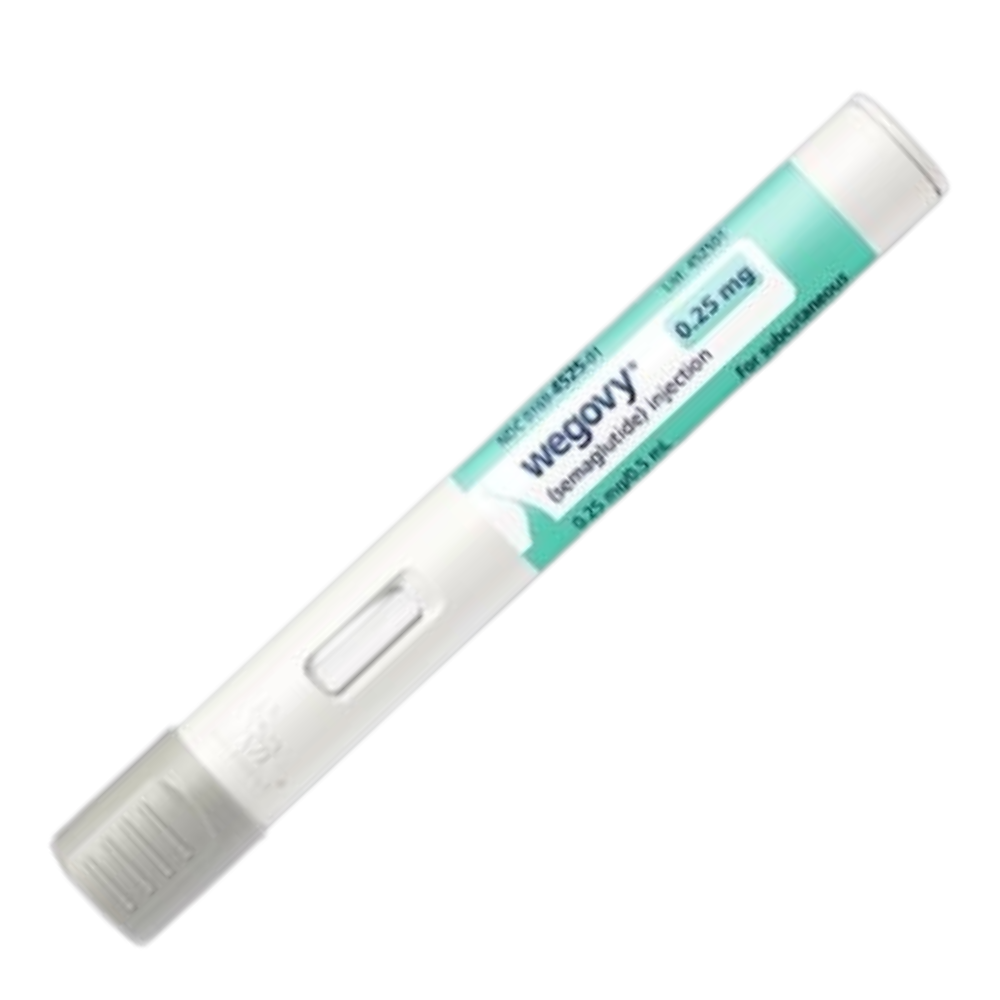
Wegovy
Wegovy is an FDA-approved medication specifically designed for weight loss in individuals with obesity or overweight and related health conditions, such as type 2 diabetes, hypertension, or sleep apnea. Wegovy is a GLP-1 (glucagon-like peptide-1) receptor agonist, which means it mimics a natural hormone that helps regulate blood sugar, appetite, and metabolism.
It is a higher dose of semaglutide, the same active ingredient found in Ozempic, which is used for type 2 diabetes management. However, Wegovy is specifically approved for weight loss, and its higher dose (2.4 mg once weekly) has been shown to be particularly effective for this purpose.
Treatment plan tailored to your needs
Same price at every dose, no hidden fees
Free delivery
No insurance required
How it works:
How much weight can you lose with Wegovy:
Side Effects:
Clinical Studies:
How to Administer Wegovy:
Pairs well with

Wegovy
If you have any questions, you are always welcome to contact us. We'll get back to you as soon as possible, within 24 hours on weekdays.
-
Shipping Information
Use this text to answer questions in as much detail as possible for your customers.
-
Customer Support
Use this text to answer questions in as much detail as possible for your customers.
-
FAQ’s
Use this text to answer questions in as much detail as possible for your customers.
-
Contact Us
Use this text to answer questions in as much detail as possible for your customers.

Why Choose A+ Health for Your Weight Loss Treatment
Expert Medical Supervision You Can Trust
Your treatment is overseen by board-certified physicians who specialize in metabolic health and diabetes management. Every prescription is carefully reviewed to ensure it's right for your specific health profile and goals.
Comprehensive Care, Not Just Medication
Beyond prescribing, our medical team provides ongoing monitoring, dosage adjustments, and support throughout your treatment journey. You're never navigating your health alone.
No Insurance Hassles Required
While we work with most insurance plans, our transparent pricing means you always know your costs upfront. No surprise bills, no complicated coverage questions—just straightforward, accessible care.
